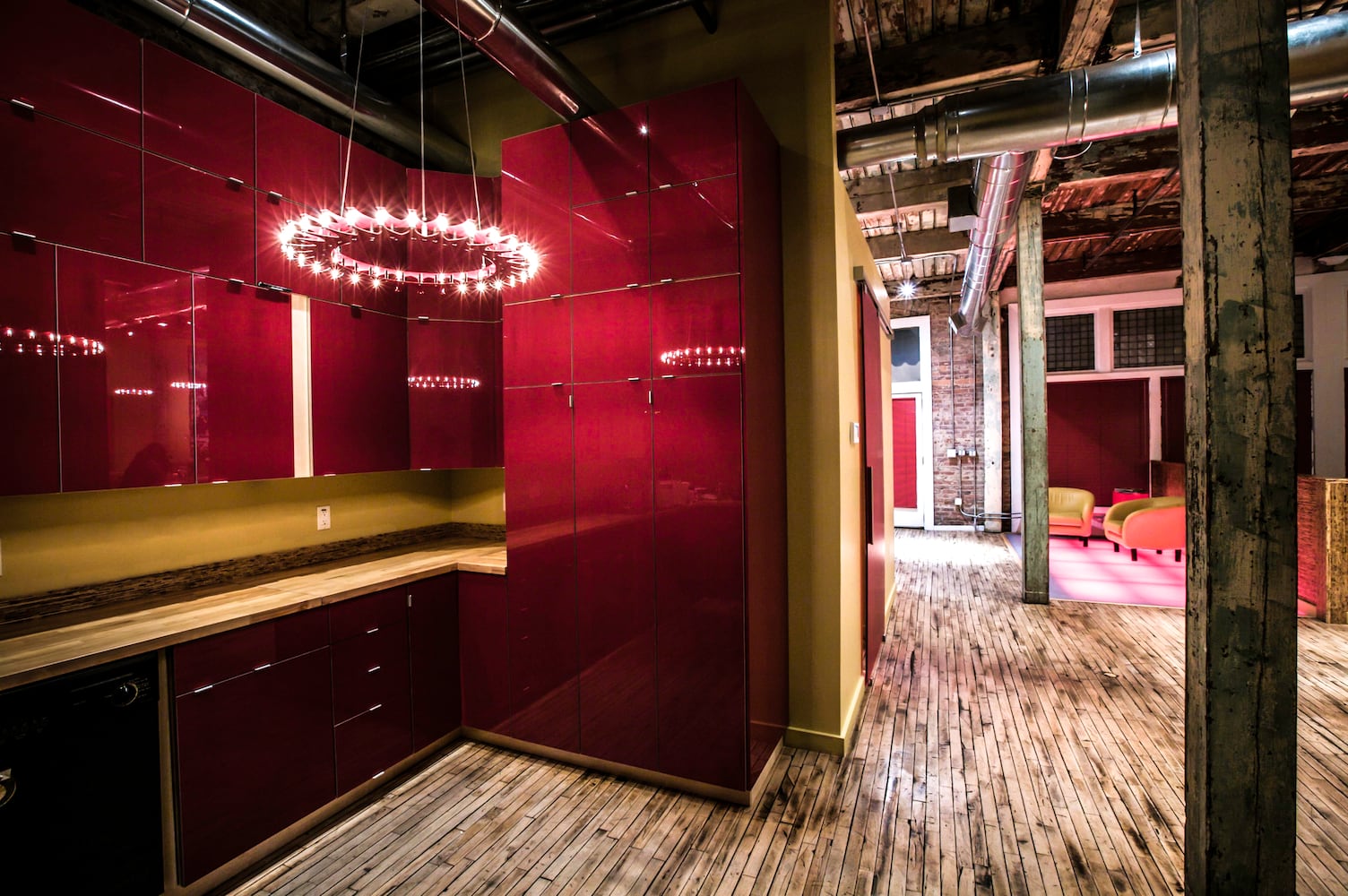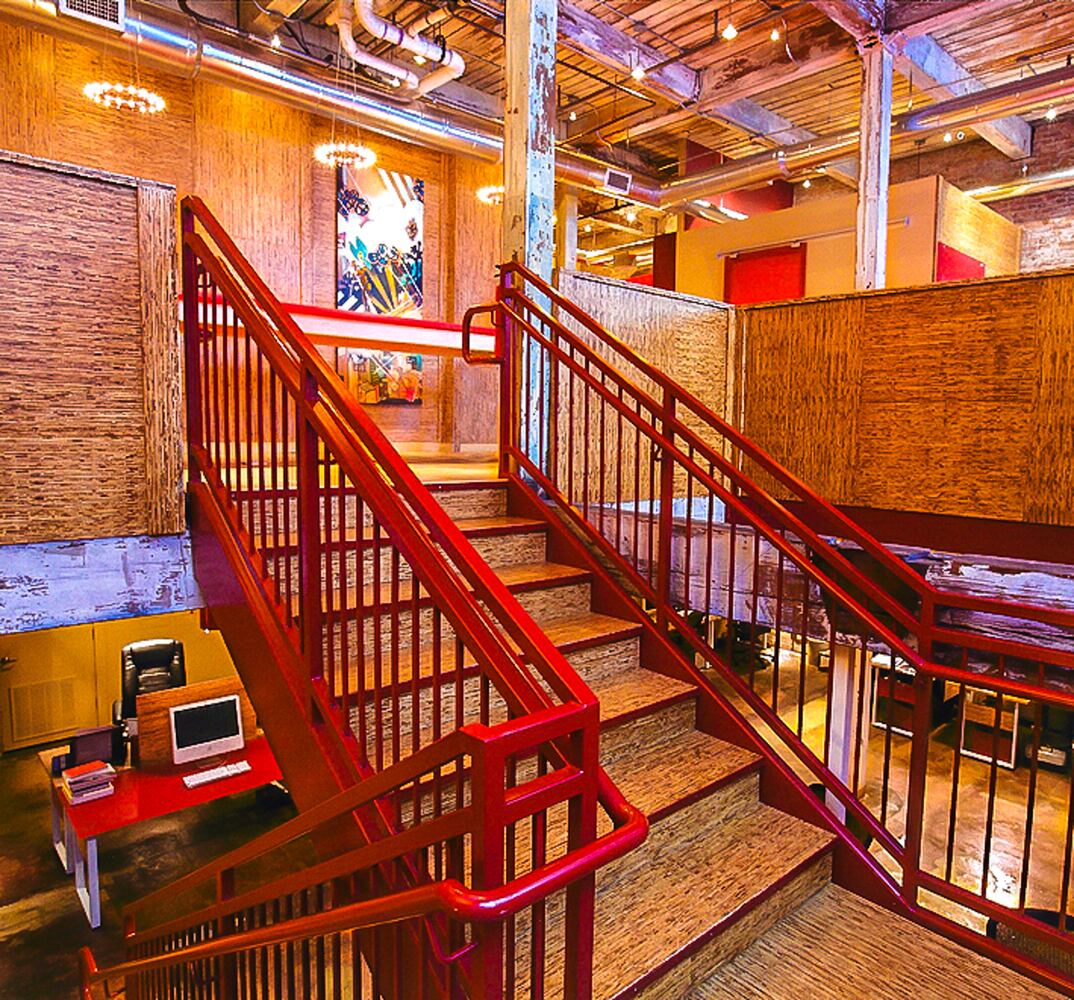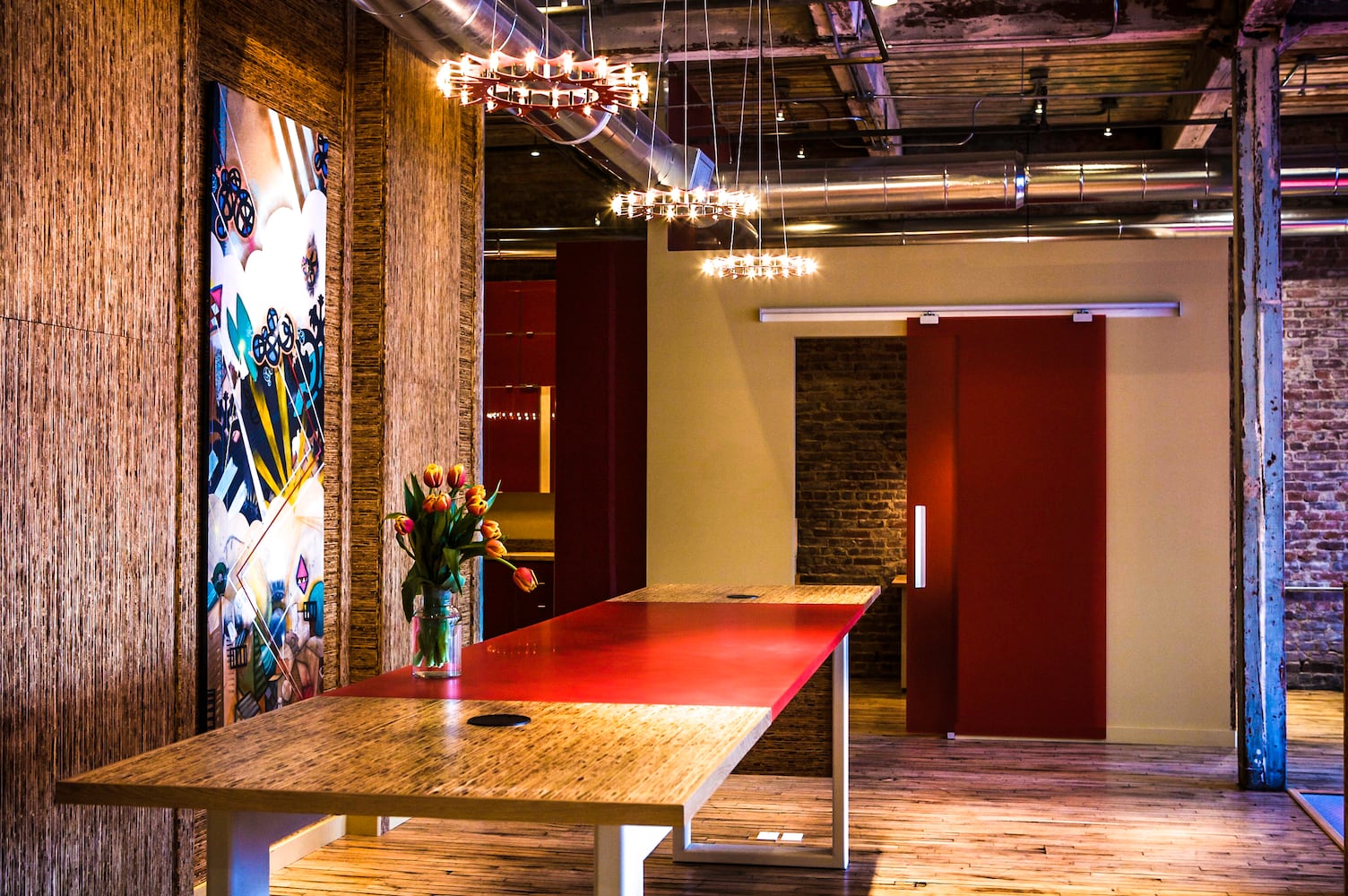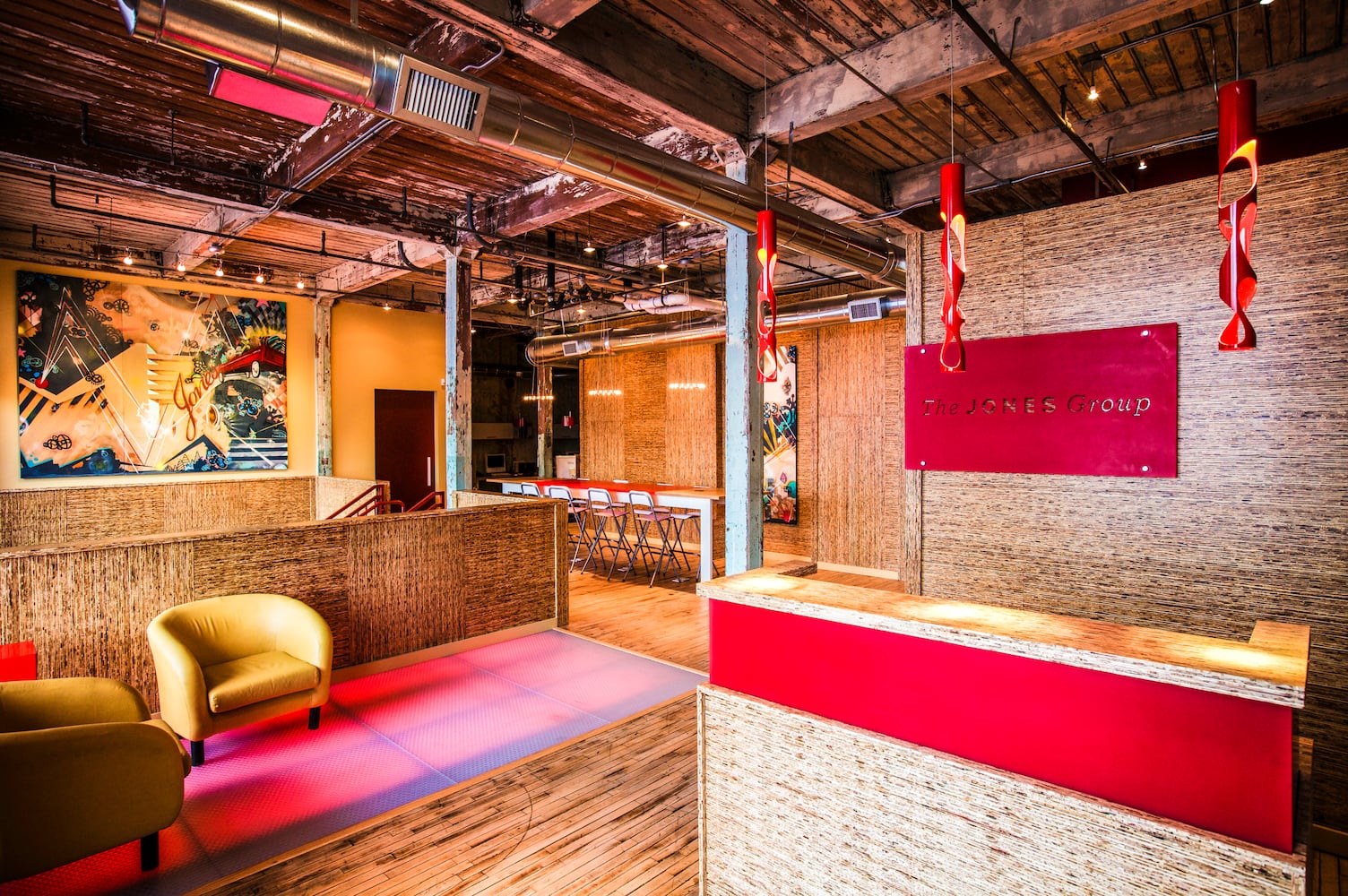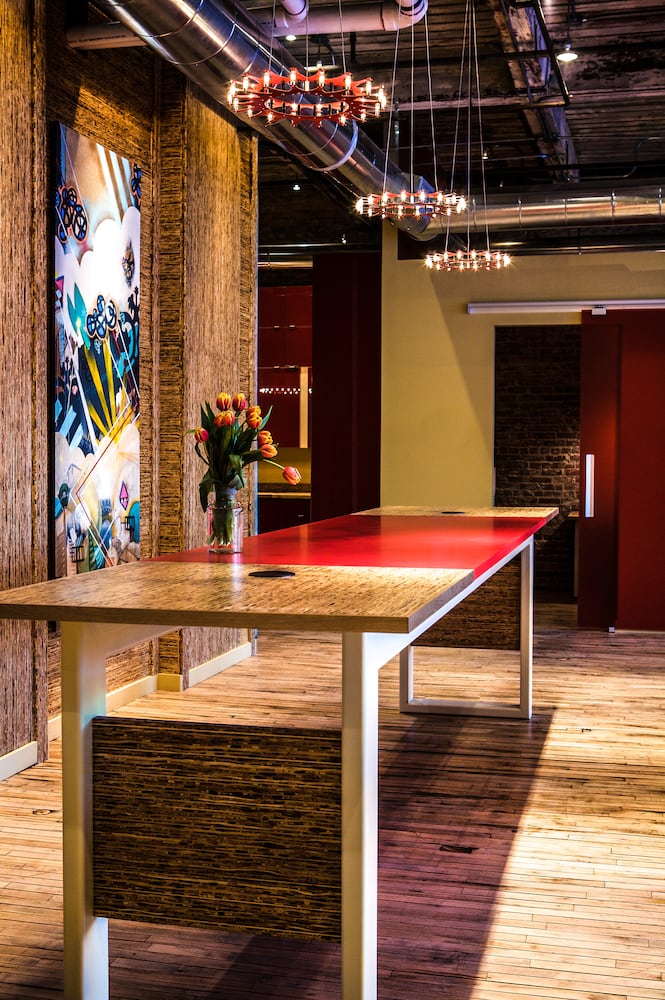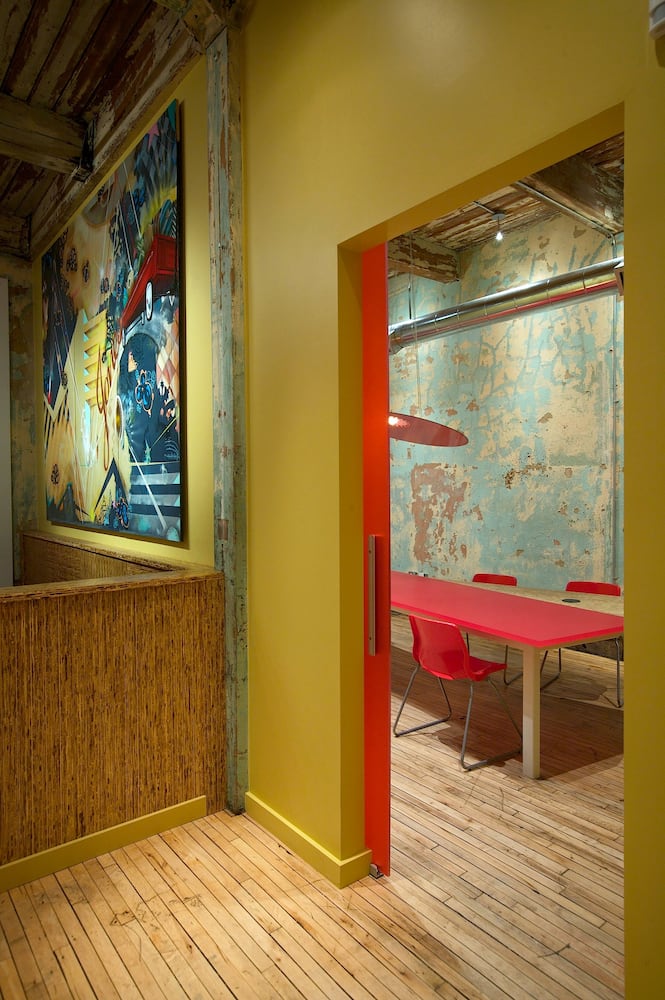Featured in the National Register of Historic Places, the warehouse at 342 Marietta St. is a special piece of local history. Giving the space a face-lift — and a new purpose in the process — Atlanta’s CG Interiors Group renovated the warehouse in a dazzling display of cutting-edge interior design.
The Selig Building was constructed in 1915 for Selig Chemical Co. The four-story commercial building’s western half was added in 1925. At 29,000 square feet, the structure is one of only a few large warehouses from the early 20th century still standing in western downtown Atlanta. The building represents a “significant departure from modern architecture of downtown Atlanta,” according to the National Register of Historic Places.
Renovated in 1992, the warehouse was transformed into loft apartments. Now the structure hosts commercial firms and loft condos alike.
Noted by the register as a building of historical significance for its unusual amount of detailed ornamentation, the warehouse remains a hotspot for Atlanta activity. Tasked by the Brand Fever company to turn part of the historic site into an office space, CG Interiors Group has written the next chapter of the Selig Building’s story.
Credit: Christine Adams
Credit: Christine Adams
“It’s always exciting to work on the adaptive reuse of a historic building — even the simplest of details imparts a world of history, with textures and materials forming an amazing natural palette against which to design,” Caryn Grossman of CG Interiors Group told The Atlanta Journal-Constitution.
“The historic character of the site created infinite opportunities for our design,” she said. “By stripping the space down to its original bones, we were able to play off the beauty of exposed brick and plaster walls, heart pine floors, and wood columns and overhead beams.
“In the spirit of adaptive reuse, all of the materials used were eco-friendly and sustainable, with many made from the byproducts of other industries. As an example, the walls were clad and the furniture constructed of Kirei board, a waste product of the sorghum harvest. We also used Agriboard, made from compressed wheat straw, as a substrate for Atlanta artist Michi Meko to create and paint the history of the agency. And, we utilized a number of products from 3-form, an industry leader in recycled plastic and resin surfaces.”
Every piece of furniture and every fixture was custom made for the project.
“I think it goes back to our original design program — aesthetically, everything in the space needed to speak to our client’s innovation and their position in the industry, while functionally, it had to work for a creative business where break-out sessions were common, but so were individual work stations,” Grossman said.
“Given the commitment to sustainable materials, coupled with the intricacies of the work environment, we knew that every piece of furniture, and every fixture, would need to be custom-made. And here, we were tremendously fortunate. My studio at the time was located at the Telephone Factory (itself listed on the National Register), and the building was full of incredibly talented artists and designers. We tapped into People of Resource’s industrial design chops to design and fabricate the furniture, and lighting designer Christopher Moulder to create all of the lighting. One of my favorite fixtures is the individual hanging light above each desk, which can be pulled down for tight work, and dimmed or brightened with just a touch.”
Another important piece of the project was preservation.
“Two adjacent spaces were combined, so we took down a demising wall that had been added sometime in the 1990s and cleared the space of old appliances and debris, but otherwise our efforts were all about exposing and preserving the original features of the building ...,” she said. “Wherever possible, we maintained the condition of what we found — peeling plaster walls became the perfect foil for modern furnishings in the conference room, while divots and color changes were preserved under a high-gloss coating on the lower level’s concrete floors.”
The interior design project would go on to earn awards, including an Atlanta Downtown Design Excellence Award ,and becoming a finalist in the Spark International Design Awards.
Credit: Christine Adams
Credit: Christine Adams
To make the work award worthy, the interior design firm had to overcome some adversity.
“We faced a few inherent challenges during the design phase,” Grossman said. “Chief among them was bringing light and warmth to the downstairs space, which lacked windows and was where most folks would have their desks. To solve it, we looked to 3-form’s Pep product, which was structurally sound enough to walk on, yet translucent enough to allow a natural glow. Christopher Moulder amped that up for us, by lighting the floor from beneath. The rhythmic layout and choice of color and materials also went a long way in enlivening what could have been a pretty drab workspace.
“And, although we plumbed for a green wall (my model was French designer Patrick Blanc’s sculptural creations), what we wanted wasn’t financially feasible at the time, and we weren’t willing to compromise. In the end, the wall was clad with Kirei and capped by another of Michi Mako’s creations. Reflecting back, it came out perfectly.”
To Grossman, one of her most powerful resources during the project was not the custom furnishings or the historic architecture. It was curiosity.
“The project, and the process, reinforced my belief that curiosity is one of the most important qualities an interior designer can possess,” she said. “Offering a fresh perspective, not a derivation from a similarly designed project, is the absolute key.”
For any amateur decorators looking to strap on their tool belts, pick up that paint brush and start that next project, Grossman said it is important to take a step back first and do some exploring.
“While it’s so tempting to just dive in, spend some time exploring,” she said. “Put together a picture book of magazine clippings or a Pinterest board of things you like. Look at colors, styles, objects, flowers and fashion (you don’t need to limit it to photos of rooms), and take some time to consider the ‘whole’ that you have created. You’ll find certain colors and schemes repeat themselves. If you’ve spent enough time, you’ll find that you’ve identified your style, and that it’s a look that is completely your own.”
Above all, be curious. To Grossman, “design would not be any fun without it.”
About the Author
The Latest
Featured
